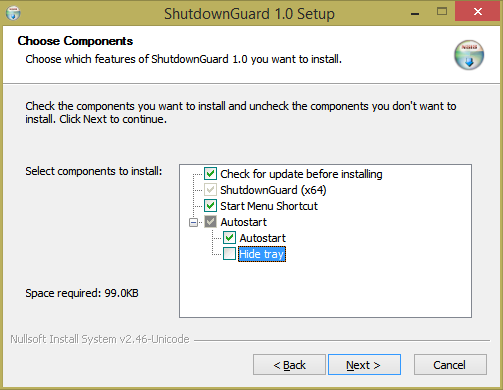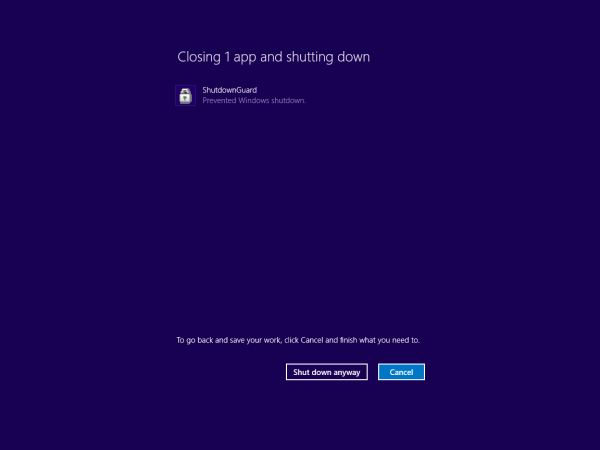Microsoft has always allowed applications to shut down or restart Windows programmatically. Installers of various desktop apps, or the apps themselves as well as various Windows components such as Windows Update can automatically shut down or restart your PC on demand or on a schedule. If you do not like this behavior, thankfully, Windows has a way to avoid it. Using a simple, third party tool called ShutdownGuard, we can stop automatic shutdown, restart, and logoff without affecting manual ways to do it.
Advertisеment
- Download and install ShutdownGuard from this page. During the installation, check the option to Autostart.

- Allow the installer to open ShutdownGuard or start it manually. It will place its icon in the notification area (system tray). The icon may also be hidden inside the overflow area. In that case, click the tiny arrow to show it.

- Right click the ShutdownGuard to access its settings. You can hide its tray icon (not recommended), disable it, or configure options such as Autostart.
- It has advanced settings in an INI file called C:\Program Files\ShutdownGuard\ShutdownGuard.ini. If you have User Account Control (UAC) set to the highest level, you may need to open this file as administrator to save changes to it. By editing the INI in Notepad or another text editor, you can customize the text message it shows when a shutdown is blocked, and some other options.
- When ShutdownGuard is running and the tray icon is "locked", every time Windows, or some app or the user attempts a restart or shutdown, the following message will be shown by Windows:
 You can click here "Shut down anyway" or "Restart anyway" to continue shutting down. However, this will forcibly terminate all apps. This screen will show you all running applications. If you have unsaved work, you can click Cancel which will take you back to the Desktop. There you can close apps properly, save your work and then safely continue with the Shutdown.
You can click here "Shut down anyway" or "Restart anyway" to continue shutting down. However, this will forcibly terminate all apps. This screen will show you all running applications. If you have unsaved work, you can click Cancel which will take you back to the Desktop. There you can close apps properly, save your work and then safely continue with the Shutdown. - To allow a shut down, just left click once on the ShutdownGuard icon in the notification area so it "unlocks" shut down. Now when you try manual shut down/restart or log off or when some app attempts it, it won't be blocked.

That's it. Now you can know how to avoid most of those unexpected and untimely reboots. It is important to note that ShutdownGuard is not 100% foolproof. Windows or apps still have the ability to override it if they force the shutdown. ShutdownGuard just gives you an opportunity to save your work in open windows and avoid unexpected restarts which are automatically initiated by installers or apps.
ShutdownGuard is made by the developer, Stefan Sundin. It is a free app but accepts donations.
Support us
Winaero greatly relies on your support. You can help the site keep bringing you interesting and useful content and software by using these options:

If it’s not from Microsoft.com then it’s most likely full of malwhere, avoid.
I would like to say that you are 100% wrong.
Silly [censored].
I would bet my life on this app NOT containing any Malware or Virus… In fact my Malware scanner and my Antivirus also bet their reputations on this fact.
It is absolutely safe. The app doesn’t even itself block shutdown or restart. It just calls the Windows API until you tell it it’s OK to restart.
I often leave my computer on overnight for long calculations like POVray renderings. As I understand it, this app won’t actually avoid a reboot if I’m not there to click “cancel”, right?
It should avoid a reboot but if you go away, it will only take you at that screen pictured in the screenshots above. When you return, you might have to press Cancel. But the reboot *should* be prevented. It works for me that way on Windows 8.1. Let us know if it works for you that way on Windows 10.